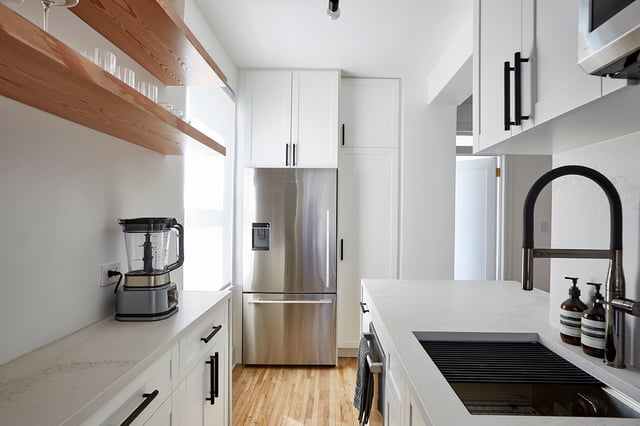
Remodeling
How to Plan a Kitchen Renovation Without Blowing Your Budget
04.25.2025

In This Article
Renovating your kitchen doesn’t have to drain your savings—or your sanity. The trick? Smart planning and even smarter spending. Start by setting a realistic budget and sticking to it, as your countertops depend on it.
Prioritize your must-haves (hello, functional layout!) over nice-to-haves (goodbye, gold-plated faucet). Reuse where you can—maybe those cabinets just need a fresh coat of paint. And don’t forget to pad your budget for surprises because, yes, something unexpected will pop up. With a little flexibility and a lot of prep, you’ll cook up a stunning kitchen without the financial heartburn.
A kitchen renovation is one of the most exciting home projects you can take on—until the receipts start piling up and your budget goes out the window faster than your old cabinets. But fear not! You can transform your space without maxing out your credit cards with a little planning (and a good sense of humor).
There’s something undeniably satisfying about dreaming up your perfect kitchen—gleaming countertops, that fancy pot filler you’ll use twice a year, and a coffee station so chic it makes your local café jealous. But kitchen renovations are like avocados: they start out full of promise and can go bad fast—especially when it comes to cost. The average kitchen remodel in the U.S. can set you back tens of thousands of dollars, and that’s before you fall in love with imported tile or smart appliances that know your latte order.
Let’s be honest—no one gets jazzed about spreadsheets when there’s a backsplash to browse. But budgeting isn’t just a boring side task; it’s the secret sauce that keeps your renovation from turning into a financial horror story. Many homeowners jump in with a vague idea of costs, only to be sideswiped by labor fees, material markups, and the mysterious “you’ll definitely need to update your electrical” surprise. A solid budget gives you boundaries and freedom to splurge where it counts and save where it doesn’t.
This guide is your trusty sous chef in the wild world of kitchen renovations. We’ll walk you through every step of budgeting—from setting a realistic number to tracking every dollar without losing your mind (or your sense of humor). Whether you’re giving your galley kitchen a glow-up or going full HGTV on your open-concept dreams, we’ve got tips to keep your budget in check and your design dreams alive. Let’s get cooking—without burning through your cash.
Renovate with confidence every step of the way
Step 1: Personalize Your Renovation Plan
Step 2: Receive Quotes from Trusted Contractors
Step 3: Let Us Handle the Project Details

Every great kitchen makeover starts with a little soul-searching—and a lot of Pinterest scrolling. Before you start knocking down walls, get clear on why you’re renovating and what success actually looks like for you (spoiler: it’s not just “new countertops”).
Before you even glance at cabinet samples, take a beat. What’s driving this renovation? Is it the weird corner pantry that eats Tupperware? The lack of counter space? Or are you just finally over those ‘90s oak cabinets? Whether you’re craving a more open layout, dreaming of a modern farmhouse look, or simply want a space that makes sense for actual cooking (not just takeout unboxing), jot it all down. Your goals will help steer the entire project—like GPS for your remodel.
We all want a kitchen that looks like it belongs in a glossy magazine spread—but don’t forget it also has to work. There’s no point in having a statement island if you can’t open your fridge without doing a sidestep shuffle. Think of your kitchen like a pair of shoes: pretty is great, but if they pinch, you won’t wear them. Function is what keeps you from cursing your design decisions six months in.
Now that you know what you want and need, it’s time to set realistic goals that match your wallet. Want all-new cabinetry, but your budget says no? Maybe refacing is the move. Dying for marble countertops? Quartz might give you the same vibe for less. Your renovation wish list doesn’t have to be a fantasy novel—trim it down to the must-haves, and let that guide your spending. Dream big, but plan smart.
Time to talk numbers—don’t worry, we’ll keep the math painless and the vibes optimistic. A realistic budget is your best renovation sidekick: it keeps your dreams grounded and your finances intact.
Kitchen renovations can cost anywhere from $10,000 (basic refresh) to over $100,000 (think custom cabinets and a wine fridge the size of your old stove). Most people land somewhere in the $30,000–$60,000 range for a mid-level remodel.
Break it down like a shopping list. Cabinets, countertops, appliances, labor, lighting, and finishing touches—give each category a number. This line-item approach helps you prioritize, compare quotes, and avoid the “wait, how did we spend that much on hardware?” moment.
A contingency fund isn’t a maybe—it’s a must. Allocate 10–20% of your total budget for surprises because there will be surprises. Like discovering outdated wiring, hidden water damage, or suddenly needing a new subfloor. This little buffer is what keeps your reno from spiraling into “HGTV drama” territory.
Homes are full of secrets, and your walls might be hiding a few. Once the demolition starts, so do the curveballs. The contingency fund is your superhero cape—it won’t stop surprises but will save the day when they strike.
Use a spreadsheet or trusted tool like Block’s renovation planner. It helps track spending, adjust plans, and stay sane—basically, your project manager in spreadsheet form.
Design a Home That’s Uniquely Yours
Block can help you achieve your renovation goals and bring your dream remodel to life with price assurance and expert support.
Get Started
You can have anything you want in a kitchen renovation—you just can’t have everything. The key is getting crystal clear on what matters most to you and your space (and, yes, your budget). It’s not about cutting corners but choosing your corners wisely.
Start with your non-negotiables. Maybe it’s more storage, better lighting, or a layout that doesn’t feel like an obstacle course. Then come the fun-but-not-essential “nice-to-haves”—think built-in espresso machines or imported tile that costs more than your first car. Listing these side by side helps you stay focused when the tough choices roll in.
Some upgrades are just plain smart. Soft-close drawers? Yes, please. Pull-out trash and recycling bins? Game changers. Under-cabinet lighting? You’ll wonder how you ever chopped onions without it. These kinds of features improve daily life and help boost resale value if you ever decide to sell.
You don’t have to give up style to stay on budget—you just need to shop smart. Can’t afford custom cabinets? Try semi-custom. Love the look of marble but hate the upkeep (and price)? Quartz is your low-maintenance BFF. The trick is finding the version that gives you the feel you want without the financial panic.
Want an airy, modern vibe and a place to store your mismatched mugs? Consider open shelving on one wall and closed cabinets on the other. It’s the best of both worlds—budget-friendly, functional, and Pinterest-worthy. This is the kind of trade-off that makes you feel like a renovation genius.
You’ve made your mood board and picked your backsplash. Now it’s time to face the less-glamorous side of renovation: where the money actually goes. Knowing what drives up the cost helps you decide where to invest—and where to rein it in.
These three are the holy trinity of kitchen costs. Cabinets alone can eat up 25–30% of your budget. Go custom and watch that number climb. Countertops vary wildly—laminate is friendly on your wallet, while marble’s more of a diva. Appliances? Decide early how “smart” you want your fridge to be (does it really need to text you?).
If you’re moving sinks and dishwashers or installing an island with power outlets—get ready to pay. Plumbing and electrical changes aren’t just expensive; they often require permits and licensed pros. It’s not glamorous, but it’s crucial. And yes, you will be asked if your breaker box is up to code.
These sneaky costs love to show up uninvited. Permits vary by location but can add hundreds (or thousands). Demolition and waste removal sound simple—until you realize how much debris your old kitchen leaves behind. Budget for it up front so it doesn’t become a surprise party you didn’t want.
Changing your kitchen’s layout may look great on paper, but it’s usually where budgets go to die. Keeping your sink, stove, and fridge in the same spots can save thousands. Want a fresh look without rerouting plumbing? Change cabinets, surfaces, and lighting instead. Your wallet will thank you—and your new kitchen will still shine.
Transparent Pricing You Can Trust

Here's where you can really flex those savvy shopper muscles. Choosing the right materials and finishes doesn’t mean going cheap—it means getting the most bang for your buck. Think champagne taste on a sparkling water budget.
Want the luxe look without the luxury price tag? Try laminate that mimics stone or butcher block instead of real hardwood. Matte black hardware can make even basic cabinets feel designer-level. And peel-and-stick wallpaper inside open shelving? Instant charm with zero commitment.
New cabinets are one of the biggest expenses in a kitchen remodel—but they don’t have to be. If your current cabinets are in good shape structurally, consider repainting or refacing them. Swap out the doors, change the hardware, and voilà: your “new” cabinets just cost a fraction of the real thing.
Timing is everything. Shop during major holiday sales (hello, Labor Day, and Black Friday) and look for package deals. Also, don’t overlook energy-efficient models. They might cost a bit more upfront but can save you money over time—and they’re better for the planet. Win-win.
Subway tile is a classic for a reason—it’s affordable, clean-looking, and goes with pretty much everything. Want something bolder? Try a smaller accent area or pattern with more expensive tile and balance it with budget-friendly options elsewhere. For flooring, luxury vinyl tile (LVT) looks like hardwood or stone without the hefty price tag—or the stress when someone inevitably spills spaghetti.
Learn More: How to Start a Kitchen Remodel
To DIY or not to DIY? That’s the renovation question. While rolling up your sleeves can save money (and give you major bragging rights), it’s important to know your limits—because fixing a DIY disaster costs way more than just doing it right the first time.
Painting walls? Totally doable. Swapping out cabinet hardware? Easy win. Installing peel-and-stick backsplash or floating shelves? Go for it! These low-risk projects are great for weekend warriors and won’t lead to emergency plumber visits.
Call in the pros if your project involves electrical, plumbing, gas lines, or load-bearing walls. A licensed contractor or designer can save you money in the long run by doing things right the first time and ensuring everything is up to code. Plus, designers often have access to trade discounts you wouldn’t get on your own.
Ask for referrals, check reviews, and always—always—get multiple quotes. Don’t be afraid to ask for examples of past work or even speak to former clients. A great contractor should feel like a trusted teammate, not a mysterious figure who disappears for days and returns with surprise expenses.
Be upfront about your budget from the start. Ask if there are ways to phase the project or use materials you purchase yourself. Staying organized, making decisions quickly, and avoiding last-minute changes will also keep labor costs down. Basically, be the client your contractor wants to invite to their kid’s birthday party. Or at least not avoid it at the grocery store.
Want to save money on your renovation? Save time. Delays don’t just test your patience—they inflate your budget faster than a fancy fridge on backorder. A well-planned timeline keeps your project (and sanity) on track.
When timelines slip, costs rise. Think: rescheduled crews, longer rentals, and surprise overnight pizza bills because your stove’s still in the garage. Waiting on materials or scrambling to find a new tile mid-project? That’s where your budget starts to sweat. Planning ahead helps you dodge these hiccups—and the extra charges that come with them.
Break your project into phases, from demo to final paint touch-ups. Assign each phase a realistic time frame, and build in a little wiggle room—because something always takes longer than expected. Align tasks with your contractor’s availability and avoid overlapping trades (your plumber and electrician don’t want to share a tiny kitchen simultaneously).
Nothing derails a renovation like your dream backsplash arriving six weeks late. Order key materials—cabinets, appliances, tile—before the crew shows up. Stockpiling early means fewer pauses mid-project and more high-fives at the finish line. It also helps prevent last-minute substitutions when your first choice is suddenly out of stock.
By keeping the timeline tight and the materials ready, your kitchen transformation will feel more like a well-executed plan and less like a reality show gone wrong. Plus, the sooner it's done, the sooner you can cook something more exciting than microwave mac and cheese.
Turn your renovation vision into reality
Get matched with trusted contractors and start your renovation today!
Find a Contractor
Goodbye, napkin math. Hello, digital sanity. The right tools can turn your renovation chaos into something (almost) peaceful—and way more budget-friendly.
Apps like Mint, YNAB (You Need a Budget), or Block’s renovation planner make it easy to keep tabs on every dollar. From tile orders to tip jars for your crew, logging expenses in real time means no budget surprises later. Plus, these tools are way less judgmental than your spreadsheet-loving friend.
Set a 10-minute weekly date with your budget—coffee optional, panic unnecessary. Reviewing receipts regularly keeps things honest. You'll quickly spot when that “quick hardware run” turns into a $300 detour.
Mood boards aren’t just fun—they’re financial lifesavers. Pin or drop your picks into Canva to keep your aesthetic tight. When faced with 47 tile options, you'll remember what you actually loved (and avoid veering into budget-busting territory). Digital planning: because your vision deserves follow-through and fiscal responsibility.
Even the best renovation plans can go off the rails—but knowing the usual culprits helps you steer clear of the budget-breakers that sneak in when you're not looking.
Deciding mid-demo that you want an island instead of a peninsula? That’s a fast track to overspending. Every change means reordering materials, shifting labor, and rewriting checks. Stick to the plan, or your budget will wave the white flag.
It’s easy to focus on the pretty stuff—backsplash! Pendant lights!—and forget the cost of the people installing it all. Labor often makes up a third or more of your budget, so pad your estimates and don’t assume “it’ll be quick.”
Sure, skipping permits might feel like a shortcut, but it can lead to costly do-overs or legal headaches down the road. Inspections ensure your project is safe—and future buyers will thank you.
Go ahead and personalize your space, but think twice before installing lime green cabinets. Choose updates that reflect your taste and appeal to future buyers. Your dream kitchen should be functional, fabulous, and future-proof.
Your kitchen can look like a million bucks—without spending it. These bonus tips are here to help you stretch every dollar without sacrificing style (or sanity).
Timing is everything. Big-box stores and appliance brands often slash prices in the off-season (think January or holiday weekends). Buying when others aren’t remodeling? That’s your secret sale weapon.
Architectural salvage yards, Facebook Marketplace, and even your neighbor’s leftover tile are all treasure troves. You can find high-end materials at bargain prices; the bonus is that it’s eco-friendly too.
Don’t be shy—ask your contractor if they get trade discounts or offer bundled pricing for multiple services. Many pros have relationships with suppliers and can pass the savings on if you speak up.
If you’re going to spend, make it work for you. Use a rewards credit card to earn points or cash back, and look for 0% APR financing options to help manage big-ticket purchases. Just pay attention to terms—because hidden fees are the one surprise no one wants in their kitchen.
Renovate now, pay later
Achieve the space you're looking for today, while financing it over time with our trusted partner.*
*Not available in NYC
Learn More
Yes, you can have the dream kitchen without spiraling into a financial meltdown or surviving on takeout forever. It all comes down to thoughtful planning, smart choices, and knowing when to save and when to splurge.
From setting a realistic budget to choosing cost-effective materials and avoiding common pitfalls, planning ahead keeps your renovation on track. It’s like cooking with a recipe—you can wing it, but it’s way less stressful (and way more delicious) when you follow a solid plan.
This is your kitchen. You don’t need to be a design pro or a spreadsheet wizard to take charge. Trust your instincts, ask questions, and don’t be afraid to speak up. You’re the boss of this remodel—and you’ve got great taste.
Your kitchen is the heart of your home, and investing in it is an investment in your daily life. With a little strategy and a lot of intention, you can create a space that works beautifully, feels like you, and doesn’t leave your wallet weeping.
How do I create a kitchen renovation budget?
What are the cheapest ways to upgrade my kitchen?
Should I renovate my kitchen in stages to save money?
Is it better to hire a contractor or DIY a kitchen remodel?
What costs the most in a kitchen renovation?
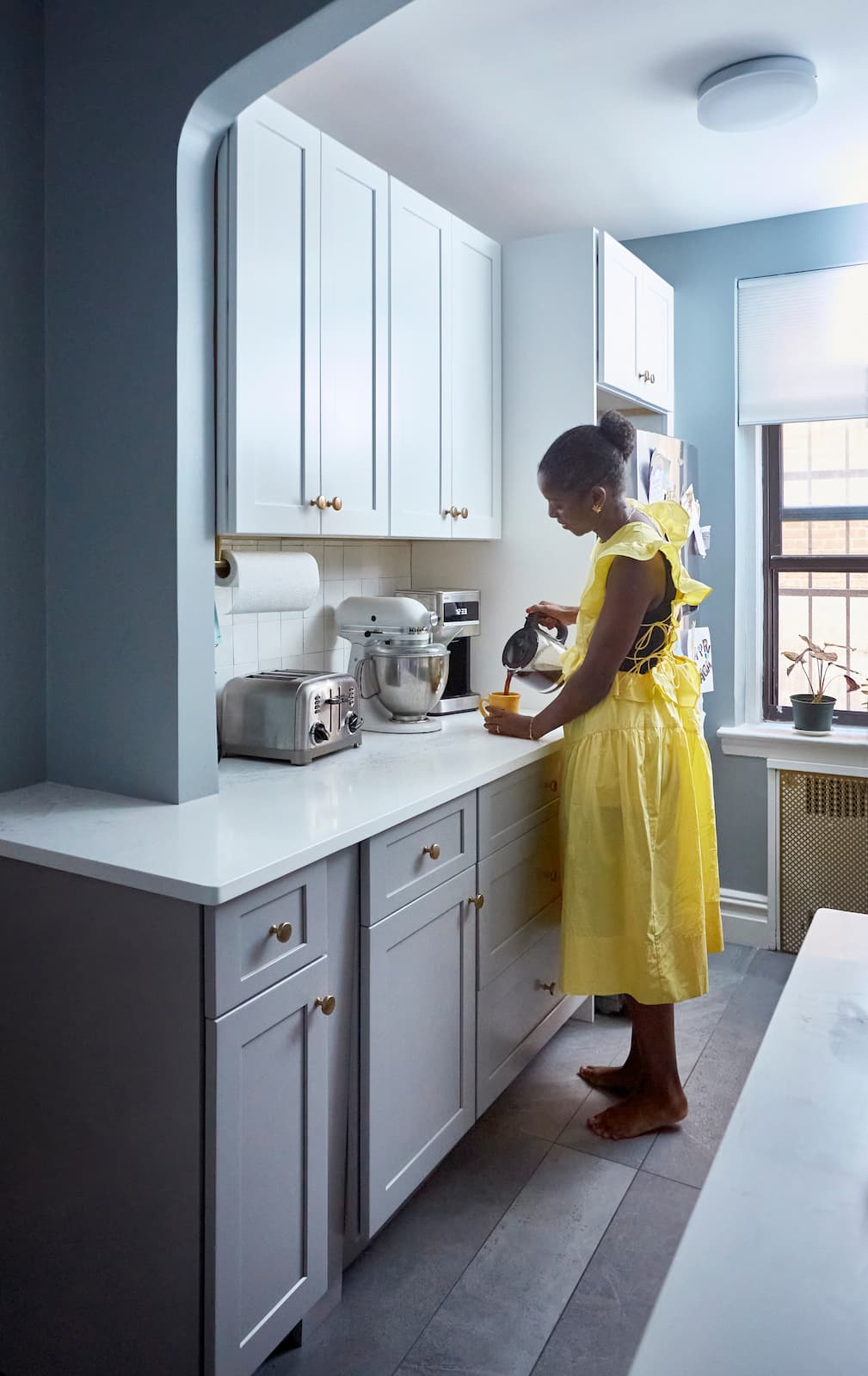
Renovate confidently with Block
Easily compare quotes from top quality contractors, and get peace of mind with warranty & price protections.
Thousands of homeowners have renovated with Block

4.5 Stars (100+)

4.7 Stars (100+)

4.5 Stars (75+)

Remodeling
How to Plan a Kitchen Renovation Without Blowing Your Budget
04.25.2025
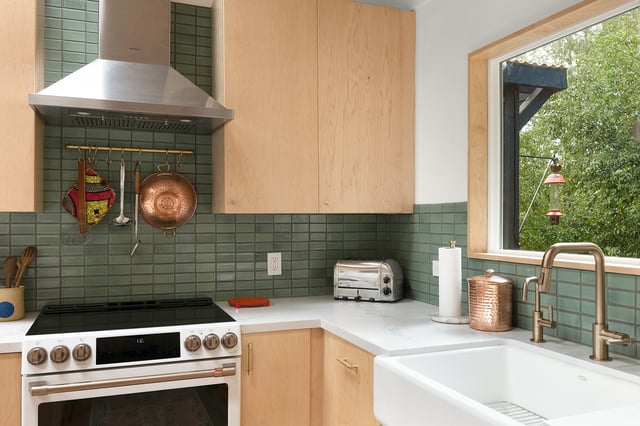
Remodeling
How to Plan Your Kitchen Remodel Step by Step
04.25.2025
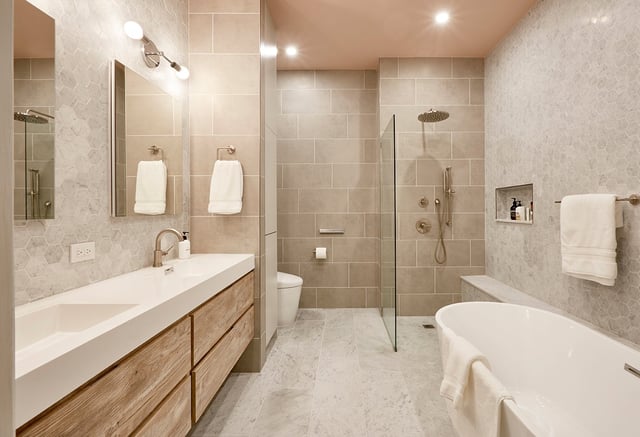
Remodeling
How to Choose Materials for Your Bathroom Remodel
04.23.2025
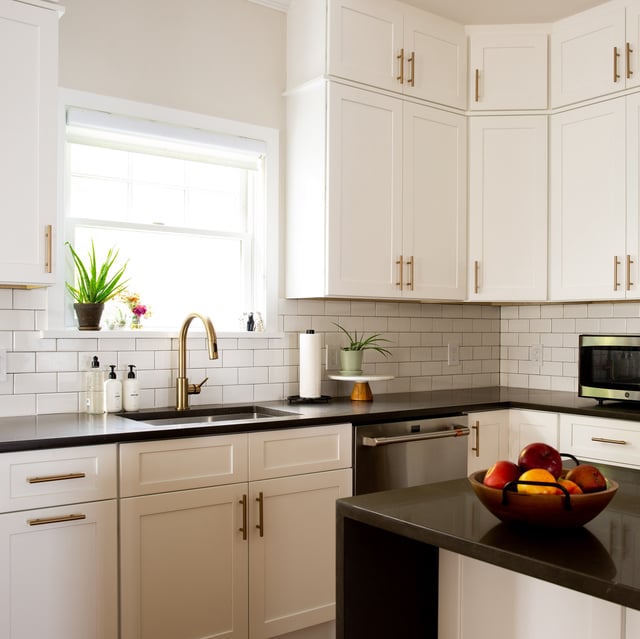
Kitchen
How Long Does a Kitchen Remodel Take?
04.01.2025

Design
The Ultimate Guide to Kitchen Tiles with Tile Options
04.01.2025
Renovate confidently